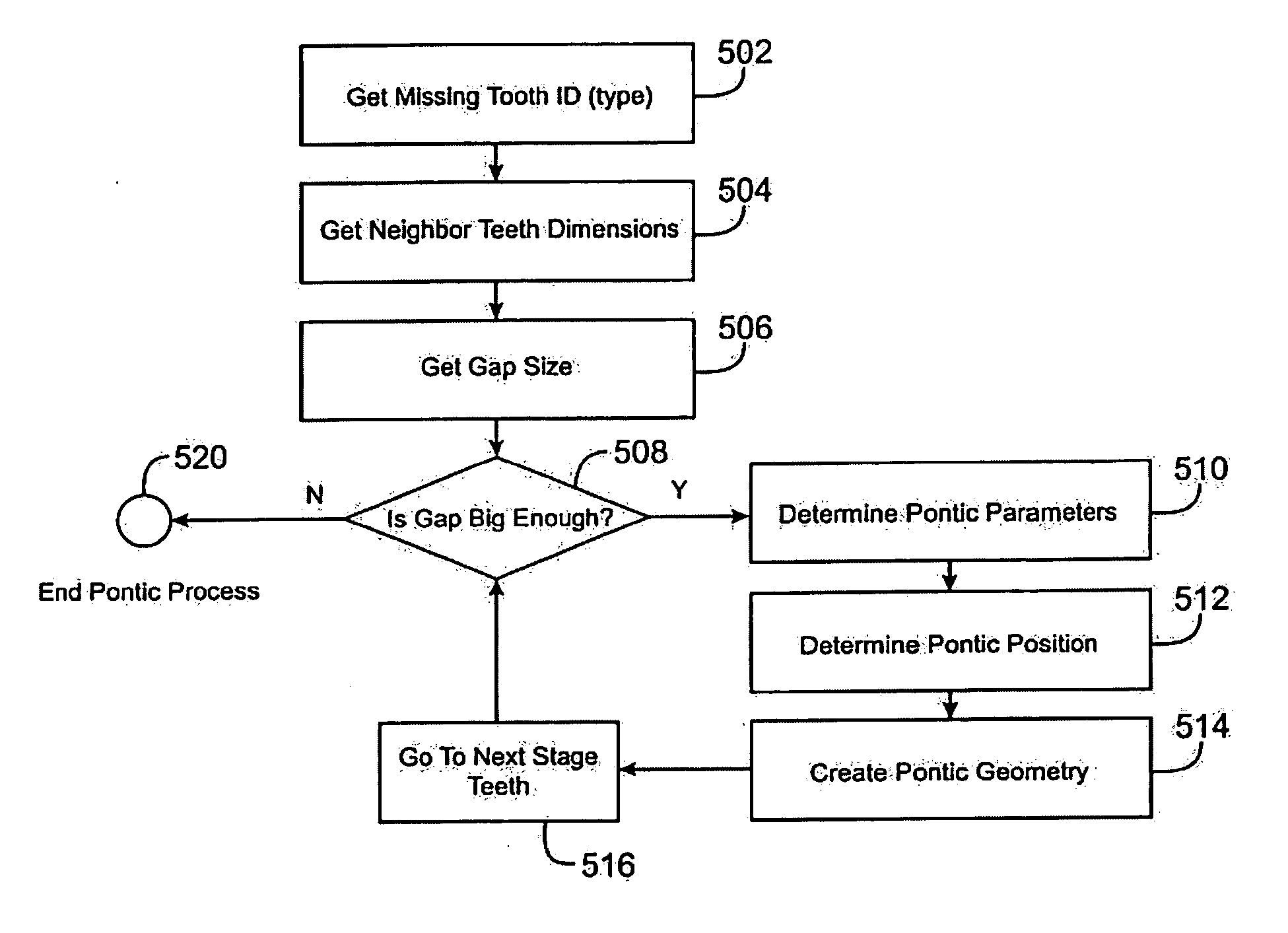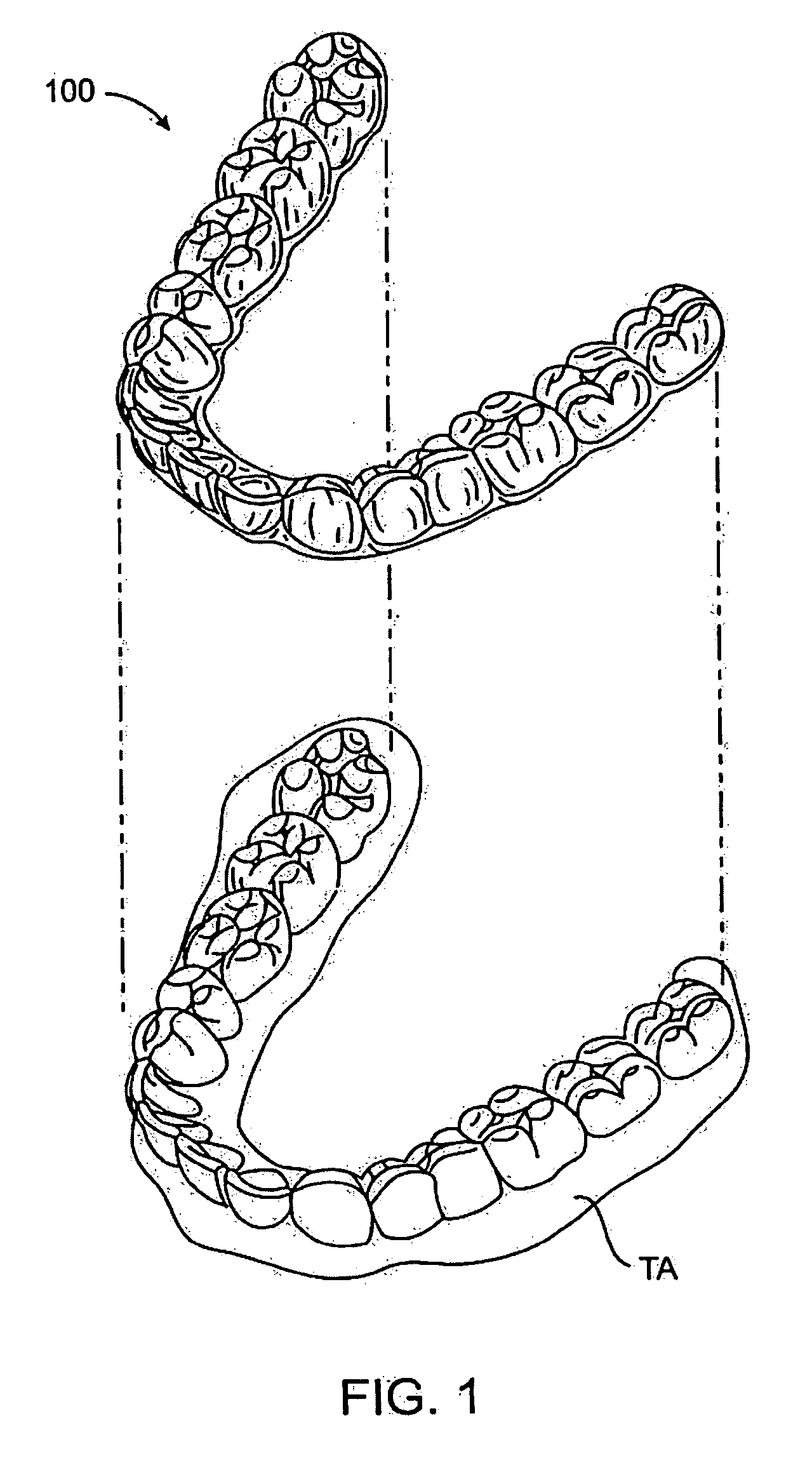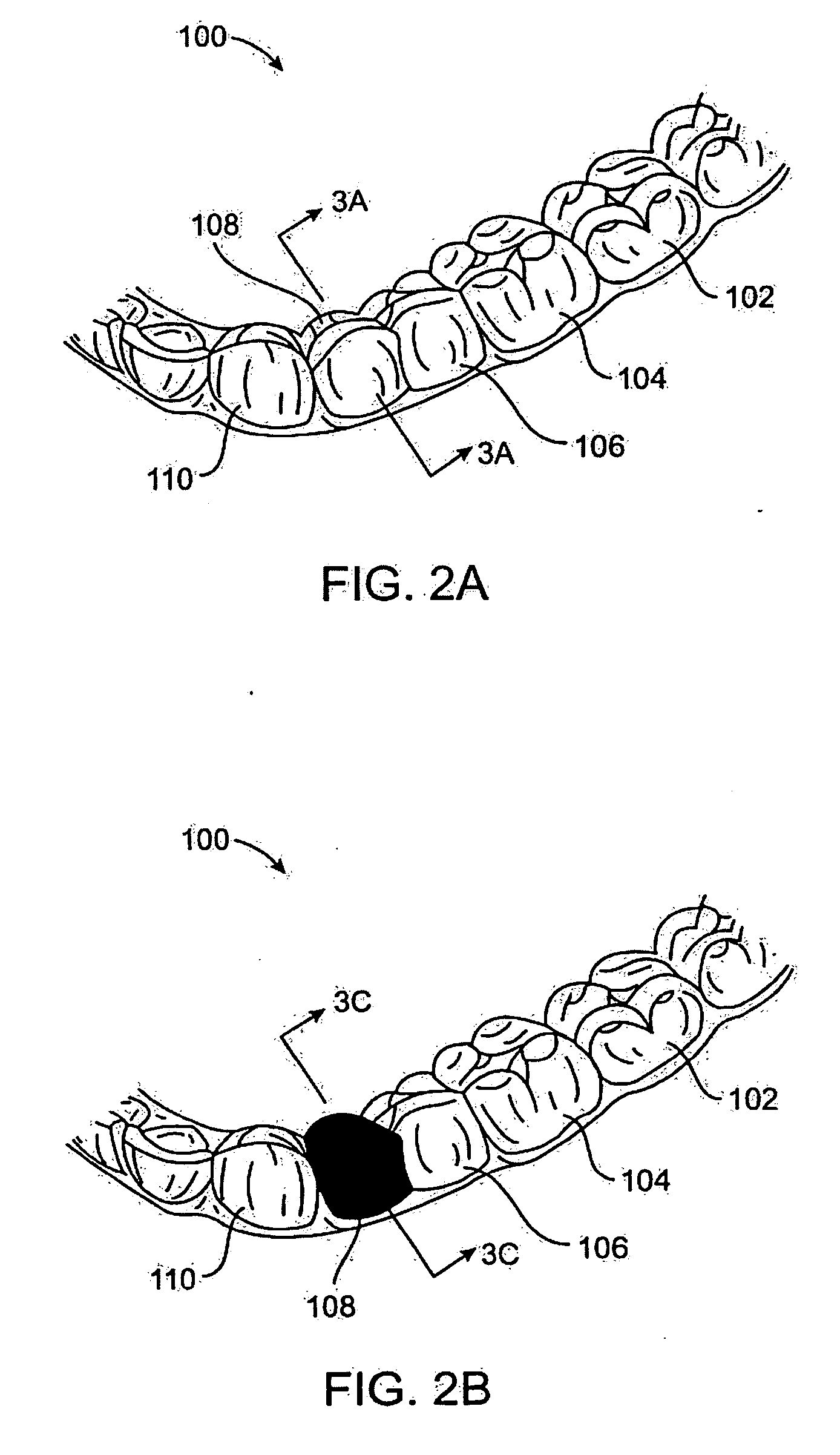[0014] The present invention provides methods and kits for forming a pontic in a polymeric shell dental appliance, such as the Invisalign® System aligners described above. In addition, the present invention provides for methods of using such modified aligners for treating patients having gaps between adjacent teeth, where the gaps resulted from prior tooth extractions or other causes. In addition to the esthetic improvement, i.e., the voids or empty spaces between teeth will be generally invisible, it is believed that the pontics may reduce the tendency of teeth to collapse inward toward each other as the teeth are moved to close the gaps during the orthodontic treatment. In the case of the Invisalign® System, successive aligners which are used to treat an individual patient can each be separately modified, with the pontic placed in a gap between adjacent teeth being reduced in size as the treatment progresses and the gap is gradually closed.
[0016] After the space (or spaces) is determined, the pontic is formed by filling the spaces(s) within the trough with a material that resembles a tooth. While it would be possible to shape a cured material into the desired geometry to be placed within the appliance trough, it will be much more convenient to fill the location with a relatively viscous but flowable and flexible material which can fill and conform to the interior volume of the target location within the appliance trough. Optionally, an adhesive or other treating material will be coated on the target location prior to filling with the pontic material. The flowable pontic material will then be cured to form the final pontic. Optionally, the shape of the pontic can be modified using spatulas (while it is still workable) and / or knives (after it has cured). Preferably, the pontic will be shaped so that it fills substantially the entire gap between adjacent teeth and extends down to the gingiva, without intruding upon the gingiva when the aligner or other appliance is worn.
[0019] Prior to delivering the curable silicone rubber, an adhesive is applied to the aligner segment corresponding to the site of the missing tooth to enhance the bond between the PVS pontic and aligner thermoplastic.
[0022] Optionally, the kit may further include other components, such as an adhesive for coating an interior surface of the appliance trough at the location to be filled. When an adhesive is supplied, the kit will typically also include a brush, sprayer, or other applicator for applying the adhesive to the appliance trough. The kit may still further comprise one or more nozzles for use with a filler applicator for dispensing the curable filler material within the appliance trough. Typically, the filler applicator will be a dispensing gun capable of applying the PVS resin in a controlled manner through the nozzle which is attached to the gun. More typically, the kit will include two or more nozzles, where each nozzle will have a different tip diameter to dispense a different ribbon size of the filler to most efficiently fill target locations of differing sizes. Further optionally, the kit may include two or more cartridges or other containers of the curable filler material, where the materials have different properties, such as color. Still further optionally, the kit could include one or more coloring materials to permit the clinician to mix and color the filler material at the time of use. In addition, the kit may include one or more shaping tools which permit precise sizing and shaping of the pontic. For example, the kit may be provided with a spatula for sizing and shaping the material before it is cured. Alternatively or additionally, the kit may comprise a knife, grinder, or other tool for shaping and removing the filler material after it has cured. To facilitate the fabrication of dental pontics in a manufacturing setting, the curable tooth-colored silicone rubber catalyst- and base-paste may be supplied in foil bags and precisely dispensed from a Pentamix system eliminating either hand-mixing or dispensing with a hand held dispensing gun.
[0023] In a third aspect of the present invention, improved methods for repositioning teeth after extractions or impatience with substantial gaps between adjacent teeth are provided. The improvements are in methods for repositioning teeth which use polymeric shell appliances each of which have a trough for receiving and resiliently repositioning the teeth, e.g., as in the Invisalign® System commercially available from Align Technology, Inc., assignee of the present application. The polymeric shell appliances have different geometries and are worn successively by a patient to reposition the teeth in a number of stages. The improvement comprises providing at least some of the polymeric shell appliances, also referred to as aligners, which have pontics at a location within the appliance trough which will fill a gap between teeth when the appliance is worn. Usually, each appliance worn will have a pontic at the location of the gap, and the size of the pontic may be decreased as the treatment progresses and the width of the gap closes. In addition to the esthetic benefits described above, the provision of a pontic within the gap as the teeth are being closed is believed to provide therapeutic benefits as well. In particular, the presence of the pontic will reduce or eliminate the tendency of teeth which are being closed over a gap to tilt or incline into the gap. Thus, it is expected that teeth which are treated with the polymeric appliances to close such gaps will remain generally more upright as they are moved, thus reducing or eliminating the need to correct any tilt or inclination which is induced by the treatment.
 Login to View More
Login to View More  Login to View More
Login to View More 


